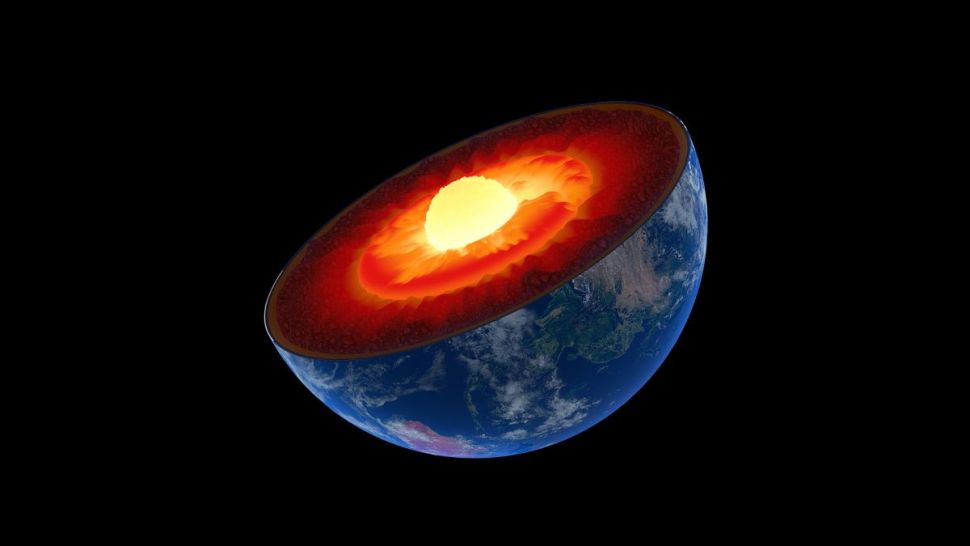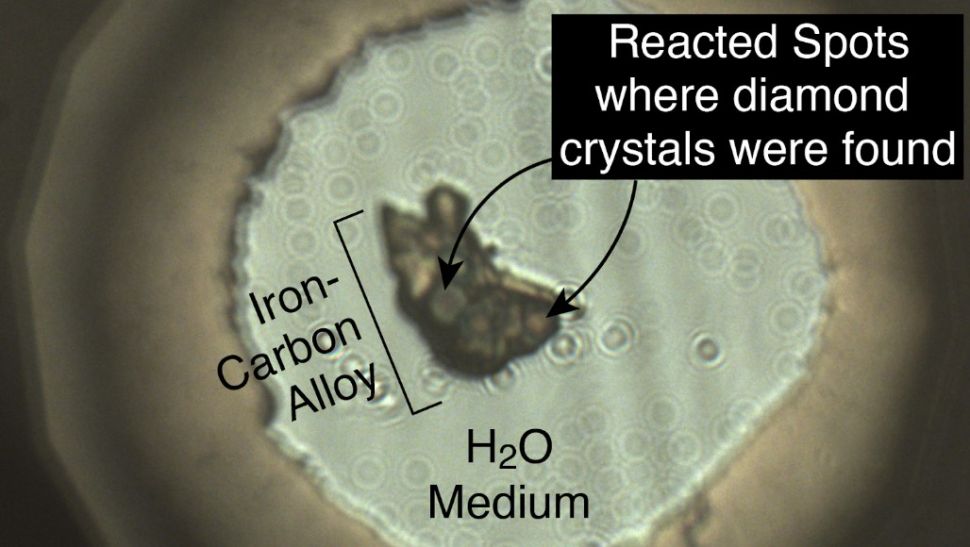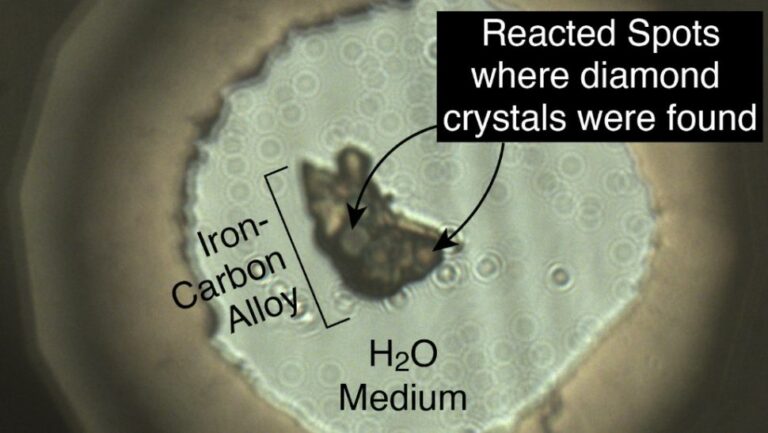Near our planet’s core, enormous blobs in the Earth’s mantle may be operating a “diamond factory.”
Extreme chemical reactions could explain why Earth’s middle layer has so much carbon.
The transition zone between the mantle, the planet’s rocky middle layer, and the molten metal core, may be a diamond-producing region.

According to a recent laboratory experiment, the elements iron, carbon, and water—all possible components present near the core-mantle boundary—can combine to make diamond when subjected to high temperatures and pressures. If this process also takes place deep into the Earth, it could be able to explain the mantle’s oddities, such as why it contains more carbon than is normal.
The discoveries may also provide light on mysterious structures located deep at the core-mantle border, where seismic waves exhibit substantial slowing. These areas, often referred to as “ultra low velocity zones,” might be only a few miles broad or hundreds of miles across and are linked to odd mantle formations, such as two enormous blobs under Africa and the Pacific Ocean. Nobody is certain of their exact nature. Some experts believe they are formed of components from the very early Earth and are 4.5 billion years old. But according to recent study, some of these zones may have developed as a result of plate tectonics, which began about 3 billion years after Earth’s origin.
According to research main author Sang-Heon Shim, a geoscientist at Arizona State University, “we are contributing a fresh concept that these are not wholly ancient structures.”
Simulating the deep Earth
Liquid iron brushes up against solid rock where the core and mantle meet. According to Shim, that transformation is just as abrupt as the rock-to-air transition at the surface of the Earth. Strange chemistry can occur at such a transition, particularly at high pressures and temperatures.
Additionally, investigations that photograph the mantle using the reflected seismic waves have revealed that elements from the crust may reach the core-mantle barrier, which is located about 1,900 miles (3,000 kilometers) below the surface of the Earth. Oceanic crust is forced into the subsurface in subduction zones when tectonic plates are forced beneath one another. Water has been trapped in the minerals of the rocks that make up this oceanic crust. As a result, water may exist in the core-mantle border and be able to trigger chemical processes there, according to Shim. (One hypothesis for the two mantle blobs under Africa and the Pacific is that they are comprised of warped oceanic crust that has been driven down into the mantle and may have carried water with it.)

At order to put the theory to the test, the researchers combined the components found in the core-mantle barrier and compressed them with diamond anvils at pressures up to 140 gigapascals. (That is around 1.4 million times the atmospheric pressure.) Moreover, the materials were heated by the researchers to 6,830 degrees Fahrenheit (3,776 degrees Celsius).
When the sample was heated, “we watched to see what type of response was occurring,” said Shim. Then, in addition to finding diamond, we also found an unexpected element exchange between rock and the liquid metal.
Churning out diamonds
Shim claimed that water behaves substantially differently at the core-mantle border due to the pressure and temperature. From the oxygen molecules, the hydrogen molecules separated. Hydrogen gravitates toward iron, which is the metal that makes up the majority of the core, because of the intense pressure. As a result, while the hydrogen fuses with the core, the oxygen from water remains in the mantle.
This causes the hydrogen to seem to displace other light elements in the core, most importantly carbon. This carbon is forced into the mantle from the core. The most stable form of carbon at the high pressures found in the core-mantle interface is diamond.
Shim stated, “That is how diamonds develop.
These are not the same diamonds that may shine in an engagement ring; the majority of diamonds that reach the surface and eventually end up as jewelry form a few hundred kilometers rather than a few thousand kilometers below the surface. However, because they are probably buoyant, the core-mantle diamonds might be carried throughout the crust, dispersing their carbon along the way.
According to the ratio of elements in stars and other planets, the mantle has three to five times more carbon than what scientists would anticipate. According to Shim, the diamonds discovered in this stratum of the Earth may account for the disparity. He and his team calculated that enough diamonds might be produced to account for the crust’s levels of carbon if just 10% to 20% of the water in the oceanic crust reaches the core-mantle barrier.
If so, many of the low-velocity zones in the mantle may be the result of water-driven melt that was sparked by the tectonic movement of the oceanic plates deep below the earth.
The next difficulty is to demonstrate that this mechanism occurs thousands of kilometers below the surface. There are a few different approaches to seek for proof, according to Shim.
One is to look for features that could be diamond clusters near the core-mantle barrier. Since diamonds are thick and would swiftly convey earthquake waves, scientists would also need to identify high-velocity zones in addition to the regions where waves move slowly. According to Shim, more academics at Arizona State University are looking into this possibility, but their findings have not yet been published.
Studying diamonds that may have originated from the Earth’s mantle’s deepest levels is another approach. These diamonds can occasionally reach the surface with minute pockets, or inclusions, packed with minerals that can only form under extremely high pressure.
It’s possible that even the famous Hope Diamond originated quite deep below the planet’s mantle. According to Shim, it is frequently debatable when scientists declare that they have found extremely deep diamonds, in part because the inclusions are so small that there is little any material to measure. But he said that it would be worthwhile to search for core-mantle border inclusions.
If someone could uncover proof of it, he continued, “that would be some kind of a revelation.”
The researchers reported their findings Aug. 11 in the journal Geophysical Research Letters.
Source: SpaceCom
Originally published on Live Science.
Do not forget to share your opinion with us to provide you with the best posts !




0 Comments